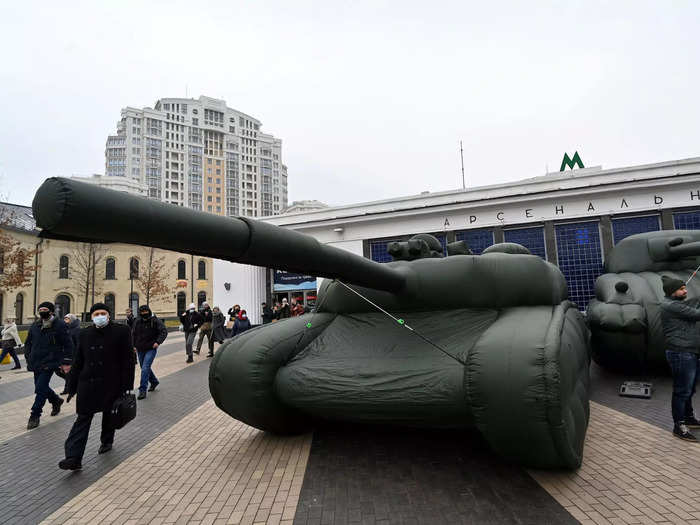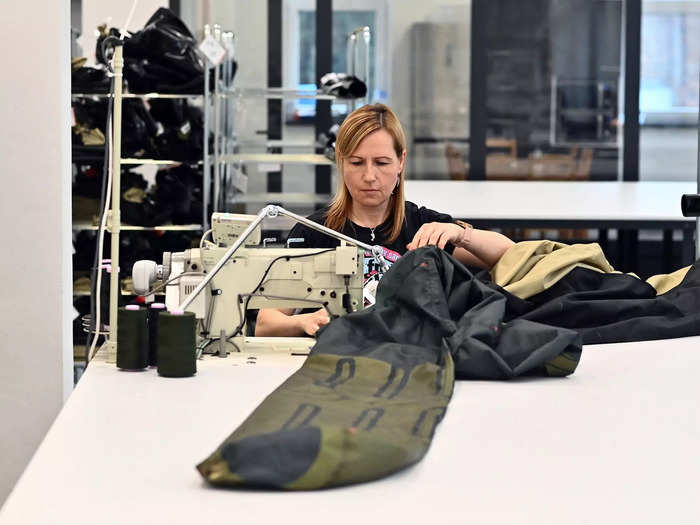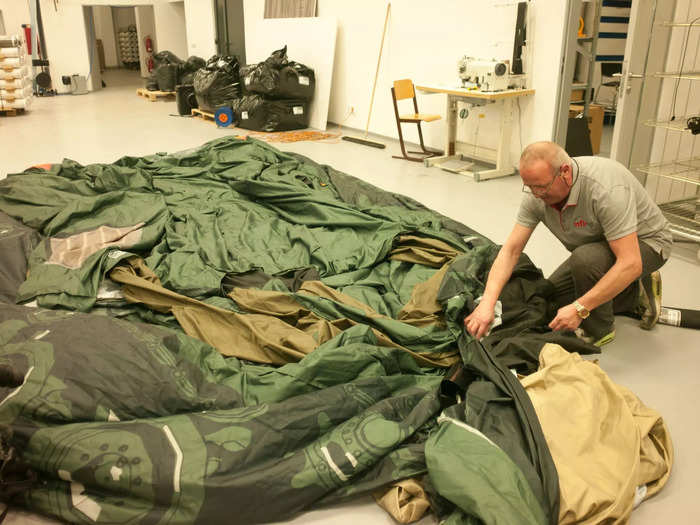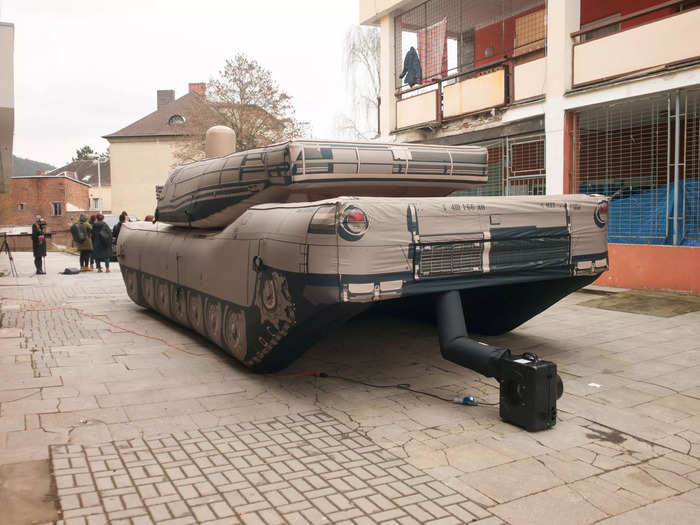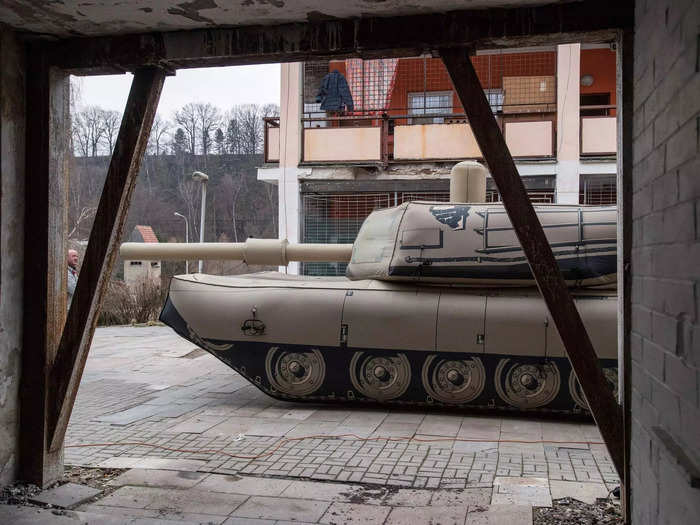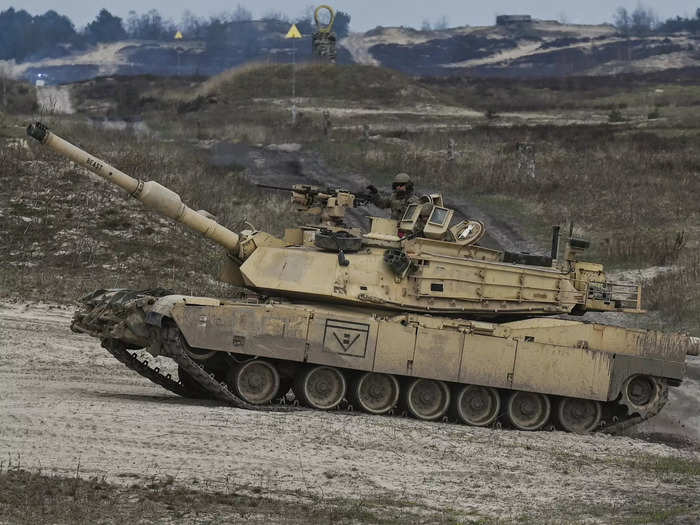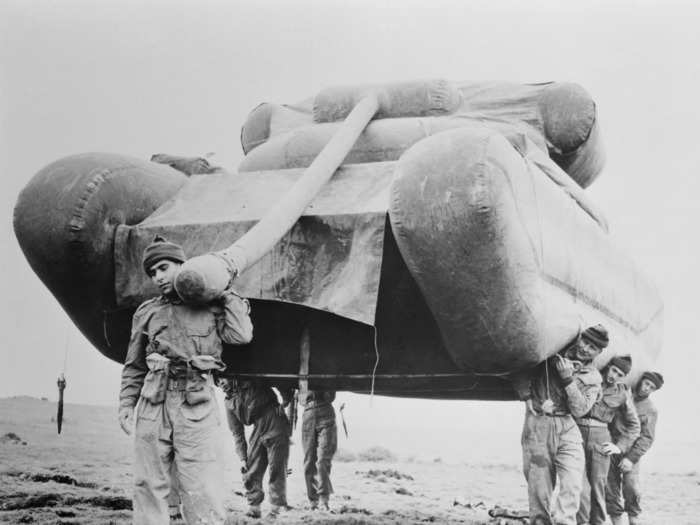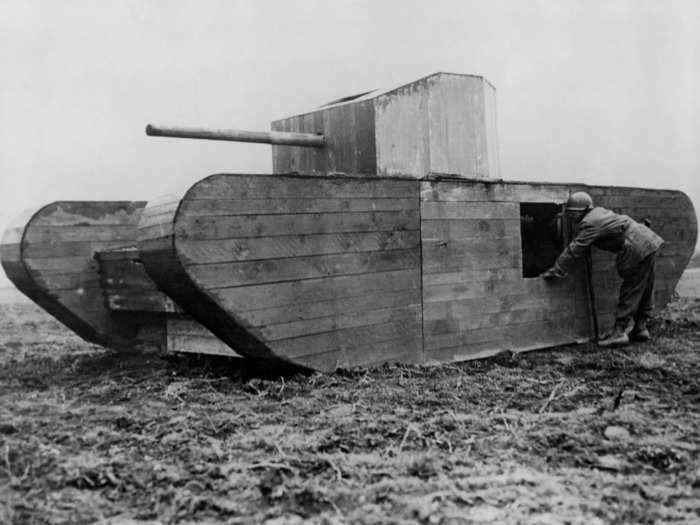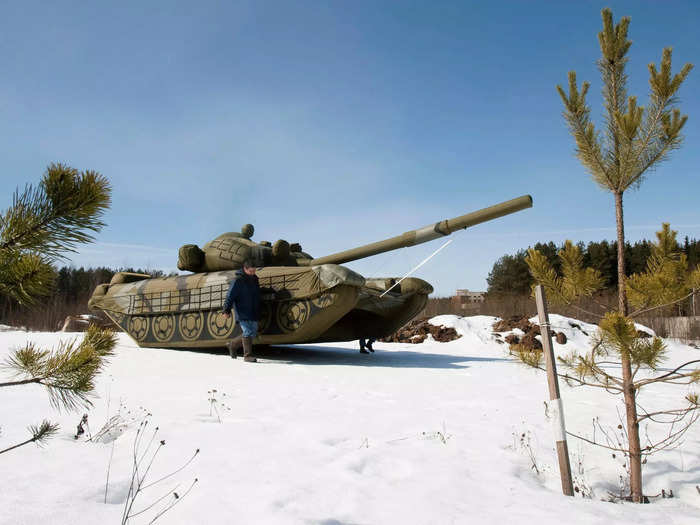An inflatable tank designed by the British next to a United States Army medium tank, Mark IV.Gallagher, 163rd Signal Photo Company/ National Archives Gallery
- Dummy tanks have been used since WWI and were used to great effect during WWII.
- One of their primary purposes is to get the opposing army to waste money and ammunition on a decoy.
Recent videos appear to show inflatable tank decoys being used on the battlefield in the conflict between Ukraine and Russia.
A drone spotted a cluster of tanks in a forest, but a tank spotted away from the trees shattered the facade. The cluster of tanks turned out to be a group of inflatable decoys, a military tactic used in an attempt to get the enemy to waste ammunition.
The use of decoys is not new. As far back as World War I, armies would use dummy tanks — the materials were just different, and the fidelity wasn't always as high. In a more technologically-advanced era with heat sensors, drones, and radar, decoys need to be better at deceiving the enemy.
One of the purposes of a decoy tank is to get the opposing army to waste time, ammunition, and money.
People walk past an inflatable tank placed outside a metro station in Ukraine. SERGEI SUPINSKY/AFP via Getty Images
Some decoys cost as little as $10,000, and some as much as $100,000.
A worker sews the material for an inflatable decoy of a military vehicle. MICHAL CIZEK/AFP via Getty Images.
For an inflatable from Inflatech, it takes four soldiers 10 minutes to set up the decoy. Other inflatables can take up to 20 minutes to set up.
An employee spreads a fabric of a mockup of a multiple rocket launcher decoy on the floor. Michael Heitmann/picture alliance via Getty Images
Inflatables don't stop at tanks either. Companies like Inflatech also make inflatable rocket launchers, trucks, and even aircraft.
Not all decoys are inflatable either. Ukraine and Russia have used wooden decoys and old oil barrels as deceptive tools during their conflict.
For drone operators, spotting the difference between a real and a fake tank is relatively easy.
Employees display a replica of a Western-style main battle tank. Michael Heitmann/picture alliance via Getty Images
Real tanks emit heat and radar signals that are hard for fake tanks to emulate. However, it is not impossible for fake tanks to fake these signals. Some inflatable tanks install space heaters or "threat emitters" — tiny radar emitters that send out signals but do not receive or process them.
Threat emitters can cost $30,000 each, making the decoy more expensive when its whole job is to cost the opposing army more money.
Some other big giveaways of a decoy lie in its lack of detail, its 2D elements, and the air pumps that inflate them.
An inflatable decoy of an M1 Abrams tank. MICHAL CIZEK/AFP via Getty Images
No matter how well made a decoy might be, it still doesn't reflect light the way steel does, and it may cast different shadows than a real tank.
Decoys still have the indicative long barrel seen on most tanks, but because that barrel is made of lightweight materials, it has to be supported by rods on the inflatable. These rods cast shadows and give away its identity as a fake.
A real tank reflects light, emits frequencies and heat, and often has people surrounding it.
A real M1 Abrams tank in the field in Ukraine. Artur Widak/NurPhoto via Getty Images
Though some of these details can be replicated, it can be hard to fake all of them at the same time. The biggest giveaway is the isolation of a tank or group of tanks.
Decoys were also once used to fake the size of an army or the amount of tanks an army had.
British soldiers hoist an enormous inflatable tank on their shoulders. Bettmann/Getty Images.
Inflatable tanks would sometimes be put next to real tanks on the battlefield so enemy reconnaissance would believe the army was larger than it was.
Decoys also used to be made out of wood or reeds from the local environment. Wooden tanks were harder to move and would sometimes have wheels underneath and transported from place to place by horses.
WWII saw a significant increase in dummy tanks, and decoys were even integral to D-Day and the storming of Normandy.
A soldier examines a dummy tank constructed with wood. Photo12/UIG/Getty Images
Operation Fortitude was a sub-operation of the D-Day operation centered around using deception to shift German attention towards Norway to the Pas-de-Calais region of France.
The Allies installed a fake army, complete with thousands of fake tanks, airplanes, and even decoy buildings in the Southeast of England. The purpose of the decoys was to make the Germans believe that Allied troops were going to invade Pas-de-Calais in France.
Decoys today are still used in tactics of deception — and even if they aren't highly realistic, they can still be successful.
Two men carry an inflatable tank across a snowy field. REUTERS/Thomas Peter (RUSSIA MILITARY SCI TECH ODDLY BUSINESS)
The recent Russian decoys found on the battlefield made the mistake of leaving a solitary tank out in the open with minimal cover. A drone with high-tech cameras can easily distinguish real from fake.
"Deception is a key part of the war, but it has to be thought through and credible," Hamish de Bretton Gordon, a retired British Army colonel, told Insider's Sophia Ankel. "But the Russian deception with these blow-up tanks is not credible."

